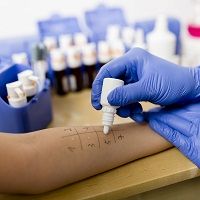Patients with Skin Infections Don't Complete Their Antibiotics
Patients afflicted with staphylococcus aureus (S. aureus) skin and soft tissue infections only take about 57% of their prescribed antibiotic doses upon leaving the hospital.

Patients afflicted with staphylococcus aureus (S. aureus) skin and soft tissue infections only take about 57% of their prescribed antibiotic doses upon leaving the hospital.
Â
By not completing the complete course of antibiotics, patients with S. aureus infection often get diagnosed with a new infection or even need additional treatment for the existing skin condition.
Â
A recent study published in Antimicrobial Agents and Chemotherapy analyzed antibiotic dosing through medication containers with electronic caps that signaled when the patient opened the antibiotic containers.
Â
The study included 188 patients who had been previously hospitalized for S. aureus-associated skin and soft tissue infections, but complete records were only available for 87 patients.
Â
This measurement system indicated a significant difference within patient reports and the electronic measurement – patients were reporting that they were taking nearly 96% of their medication, when in reality only 57% were taken.
Â
Interestingly, the researchers noted higher rates of non-adherence to antibiotic doses in the patients who were prescribed more than one antibiotic, didn’t visit the same healthcare provider for follow-up visits, or didn’t have a regular healthcare provider
Â
Lead author Loren G. Miller, MD, MPH, LA BioMed, remarked in a news release, “We have seen similar differences and similar failures to take all the prescribed medications in many other conditions, including hypertension, diabetes, and HIV. But these failures have never been studied in skin infections or linked with clinical outcomes. These findings suggest that we need better methods to have patients receive antibiotics for skin infections, such as counseling them on the importance of adhering to the medication dosing or by using newer antibiotics that require only once-weekly dosing.â€